The Alphacool NexXxoS Cool Answer 360 DDC/XT Liquid Cooling Kit Review
by E. Fylladitakis on October 24, 2016 9:30 AM ESTThe NexXxoS XP3 Light Block
Except from the block itself, the necessary hardware for the mounting of the block – including a universal backplate and retention brackets for Intel and AMD platforms – can be found inside the packaging of the block. There is also a small syringe with unbranded silver thermal material and instruction manuals.
Alphacool has designed the NexXxoS XP3 Light to be compact and easily adaptable for future platforms. It is very small and lightweight, hardly larger than the CPU socket itself. Two openings for the compression fittings can be seen at the top of the block. The user has to make sure that the flow goes in from the center of the block and out from the edge, otherwise there will be a great loss of performance. Alphacool also includes a very clear notice that no tools should be used for the tightening of the compression fittings, as that can easily damage the plastic threads. Tightening the compression fittings by hand is more than enough.
The base of the NexXxoS XP3 Light is obviously copper. It is well-machined and smooth enough, but Alphacool did not bother polishing it down to a mirror finish. The company likely expects that the experts who would buy such a kit already know that a perfect mirror finish would not actually benefit performance by a measurable amount. Alphacool is also using copper screws in order to prevent chemical oxidation.
The interior of the NexXxoS XP3 Light is relatively simple, yet it is more complex than what an untrained eye might realize. The plastic part forms two H shaped jets that forcefully direct liquid flow towards the copper base. The copper base is practically a thin sheet of copper that has many small traces engraved into it, forming about a thousand mini rectangular pylons. The pressure generated by the jets forces the liquid to move in-between these mini pylons, enhancing heat transfer.
The NexXxoS XT45 Radiator
Perhaps the most important part of the system is the massive NexXxoS XT45 radiator. Alphacool supplies it along with mounting and fan screws, as well as with four plugs.
The 360 mm-class XT45 is a massive heat exchanger that measures 400 mm long and 46 mm thick. Its exterior frame is steel, while the chambers and the fins are copper, resulting to a massive weight of 1.4 kg without any parts/fans attached. The paint job of the steel frame is excellent, but it is only superficial on the radiator itself, covering just a bit of the copper chambers. Close inspection reveals that the fins are bare copper.
Alphacool placed not two but six openings for compression fittings, which is why they also supply four plugs alongside with the radiator. The user can select two of the fittings with the most suitable orientation, or even connect more than one loop/system to a single radiator.


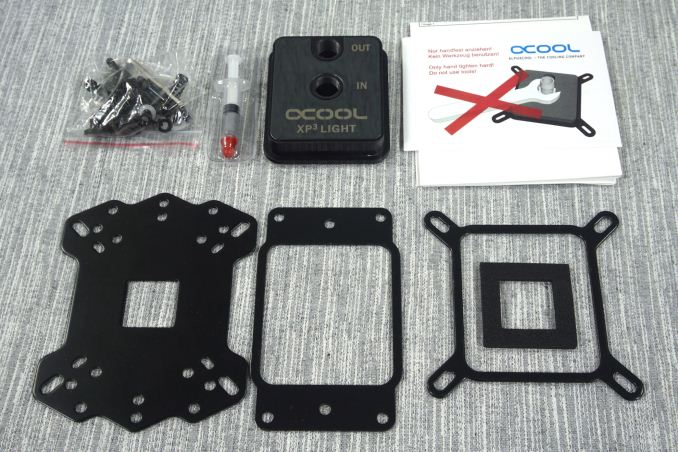
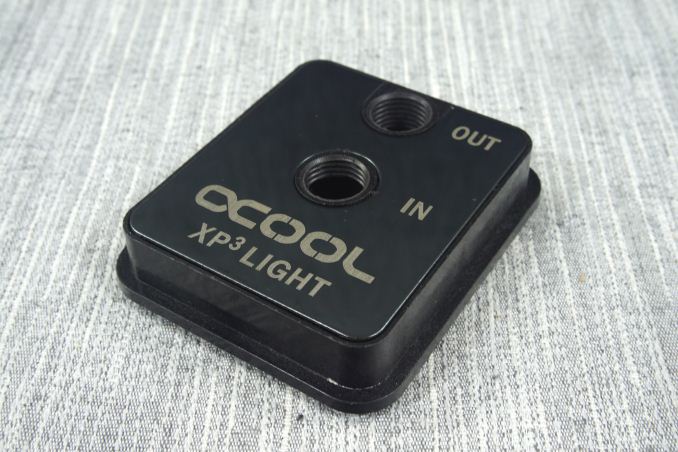
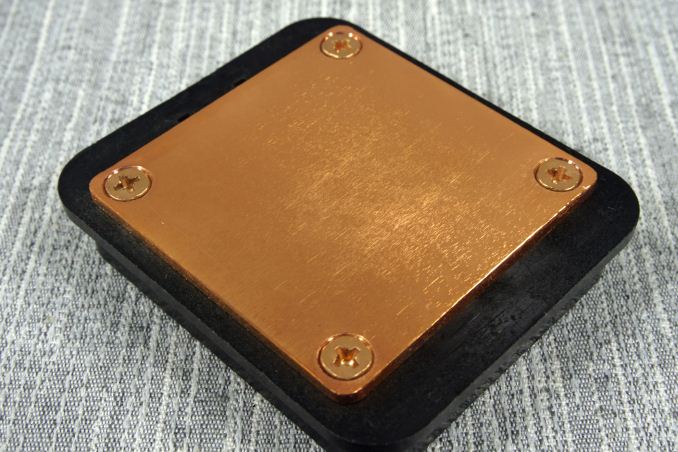
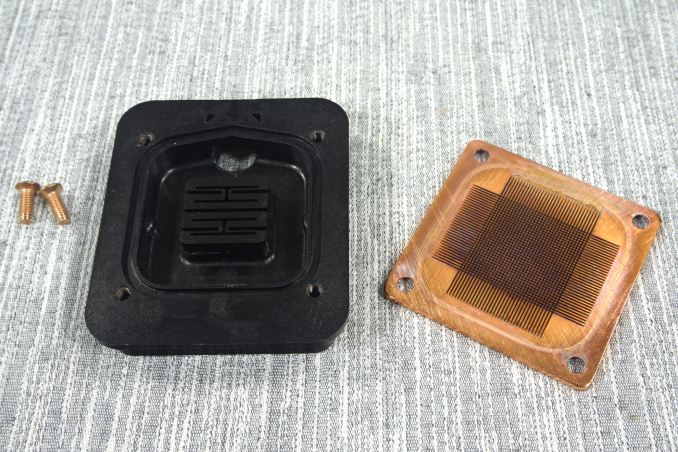
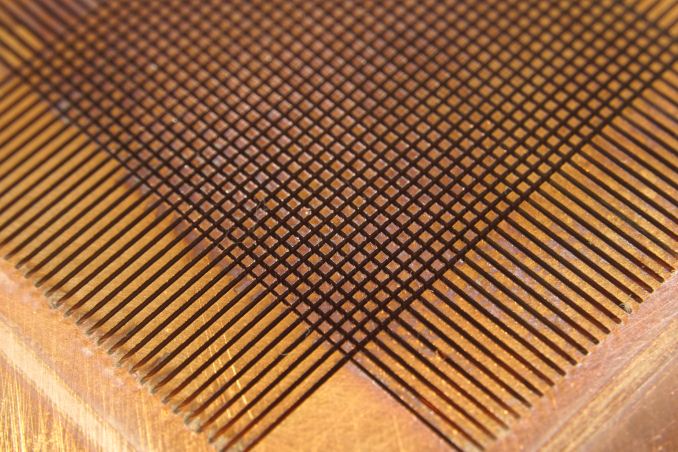
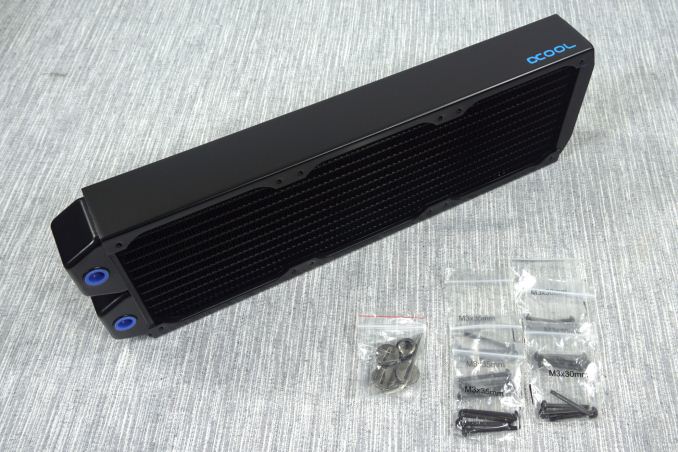
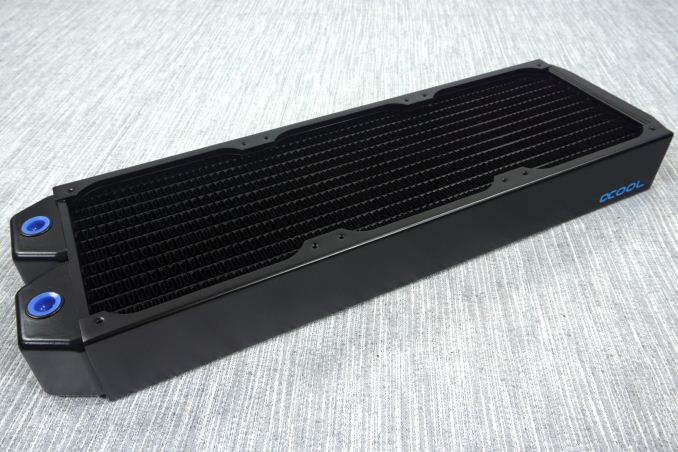
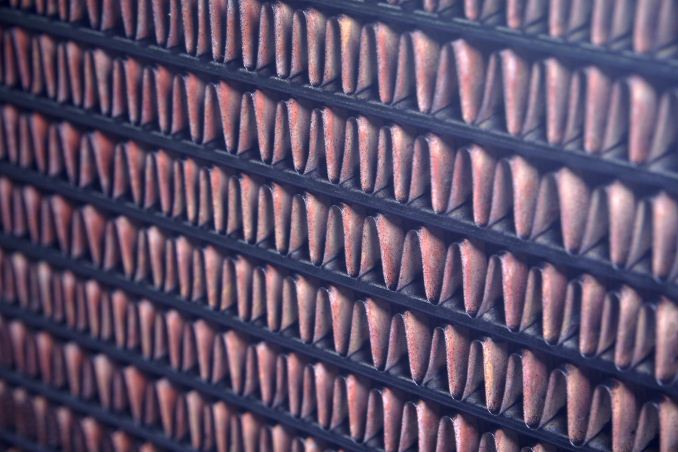
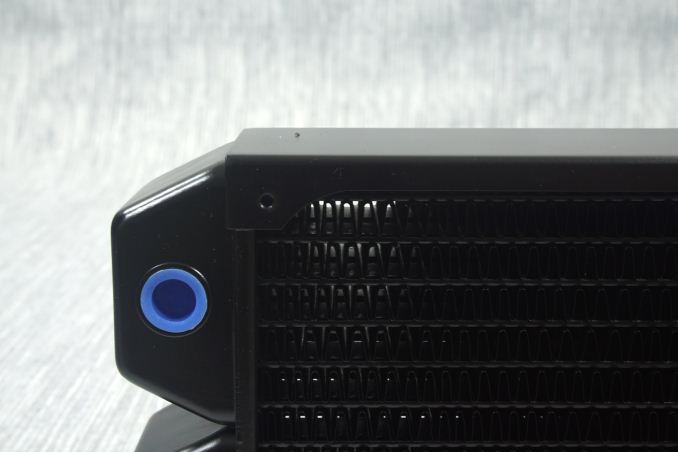









40 Comments
View All Comments
BrokenCrayons - Tuesday, October 25, 2016 - link
Thats sort of the point I'm getting at here. CPU performance has become a lot less relevant in recent years. Sandy Bridge's realease is a pretty good place to draw a line in the sand about when that sort of thing happened. I'd say perhaps a little earlier than that, but the target of acceptable CPU performace is still moving along slowly, but hardly keeping up with the release of new generations these days which in turn devalues the meaningfulness of overclocking and therefore the usefulness of creative cooling methods.GPUs are another story, of course. Higher screen resolutions and maybe VR depending on whether or not it survives the coming couple of years will continue to drive GPU demand and maybe make it worth the effort to do something unusual with a video card to wring a little more out of it.
Batmeat - Monday, October 24, 2016 - link
This setup would be easy to cut the noise by simply swapping out the fans, changing the mounting location of your pump and resevoir, and finally adding some dynamat around the pump and mount site.Dynamat was used back in the day by car stereo enthusiasts to deaden vibration from the subs in your vehicle. I would imagine something better is available today as I haven't messed around with the stuff for nearly 20 years.
JoeyJoJo123 - Monday, October 24, 2016 - link
If we're talking sound isolation material, then thick Rock Wools (used as in-wall insulation or as wood-framed panels in hi-fi home theatre rooms) and Sorbothane (used to acoustically/vibrationally isolate two objects, through a sorbothane gasket, feet, pads, etc)Neither material is particularly ideal to place inside a computer case.
The most sure-fire method to totally remove the noise from a PC is to literally move into another room. You can connect the peripherals such as mouse, keyboard, monitors through extended cables running through the wall into the adjacent room's closet, for example.
Arbie - Monday, October 24, 2016 - link
I stopped even thinking about water cooling when the CPU ability trajectory crossed my needs line. In fact I no longer consider overclocking. A good Intel CPU now, stock, is almost *twice* as powerful as my high-wattage OC'd beast from 8 years ago. Even that rig rarely struggles now, and when there is a slowdown it is almost always due to the GPU or the disk I/O.If I were building now I might OC by a few percent, and upgrade a bit from the stock air cooler, but that's it.
Speaking generally here, to the average enthusiast. Put your money in the GPU, the disk I/O, and lots of RAM. Pushing your CPU will bring no perceptible gains for the expense, increased heat, and reliability concerns. In particular, forget about water cooling.
JoeyJoJo123 - Monday, October 24, 2016 - link
It really depends on the application you're running. Generally, the CPU isn't taxed much, and you're right about that.But in other cases, the CPU is taxed _a_lot_ and having a fat overclock can make a large difference. For example, right now I'm planning a dedicated streaming PC, complete with 3 general purpose capture cards (HDMI/Analog video per card). OBS can use Intel QuickSync, etc, but the entire point of having a dedicated streaming PC is to have a high quality streaming experience that offloads extra video capture work to a different PC. The best video quality comes from utilizing x264 to single-pass encode incoming raw video, and of course, this is software encoding so it's taxing on the CPU.
http://www.anandtech.com/bench/CPU/53
I can't honestly explain the outlier of the 6700 being significantly faster than a higher clocked 6700K, but ultimately that x264 single pass performance relies mostly in having high IPC first, and lots of cores second, which is why 3.5GHz 28 thread monsters sit lower on the list as compared to a 4.7GHz 8 thread 4790k.
Right now, I'd say the best possible dedicated streaming PC would have a highly overclocked (~4.8GHz) 6700k, which would likely allow the user to set up slower presets for a potentially higher quality stream, given a fixed bitrate upload speed (as in Twitch), etc.
So yeah, in some cases a fat overclock does help. It really comes down to whether the task is CPU/GPU/Storage starved. (Amdahl's law, etc.)
bearxor - Tuesday, October 25, 2016 - link
One thing I'd like to see mentioned in the review for a kit like this that I didn't see here (did I miss it?) is expandability. Can I add a vga cooler in the line and the pump/fans/radiator can handle it? Can I add two cards?qasdfdsaq - Wednesday, October 26, 2016 - link
Yes, and yes. That's basically the point of an open-loop system to begin with.(Incidentally I have the same kit and I bought it primarily to cool my ridiculous heating plant of a GPU)
bearxor - Saturday, October 29, 2016 - link
I'm not saying you couldn't do this, because obviously you can, but what's the impact to the coooing performance if you put a 150-200W GPU part in the line here.Since this is the first cooling loop review they've done in forever they're hopefully looking for feedback on what they'd like to see in future reviews and that's what I'd like to see.
Someone looking at a kit like this would obviously, IMO, be looking at it as a starter kit to expand upon in the future. A review should address what impact that expansion could have on the cooling performance of this kit.
microsofthelpnumber - Wednesday, October 26, 2016 - link
Microsoft Help Number UKMicrosoft is a brand name for many computing services. No matter what problem you are facing with which Microsoft product. Our team has expertise on every problem of Microsoft. To seek help call on@0800-098-8371.For More Details Please Click Here:-
http://microsofthelpnumber.co.uk/
Mariam24 - Wednesday, October 26, 2016 - link
Are you single tonight? A lot of beautiful girls waiting for you to https://goo.gl/PSgNLj